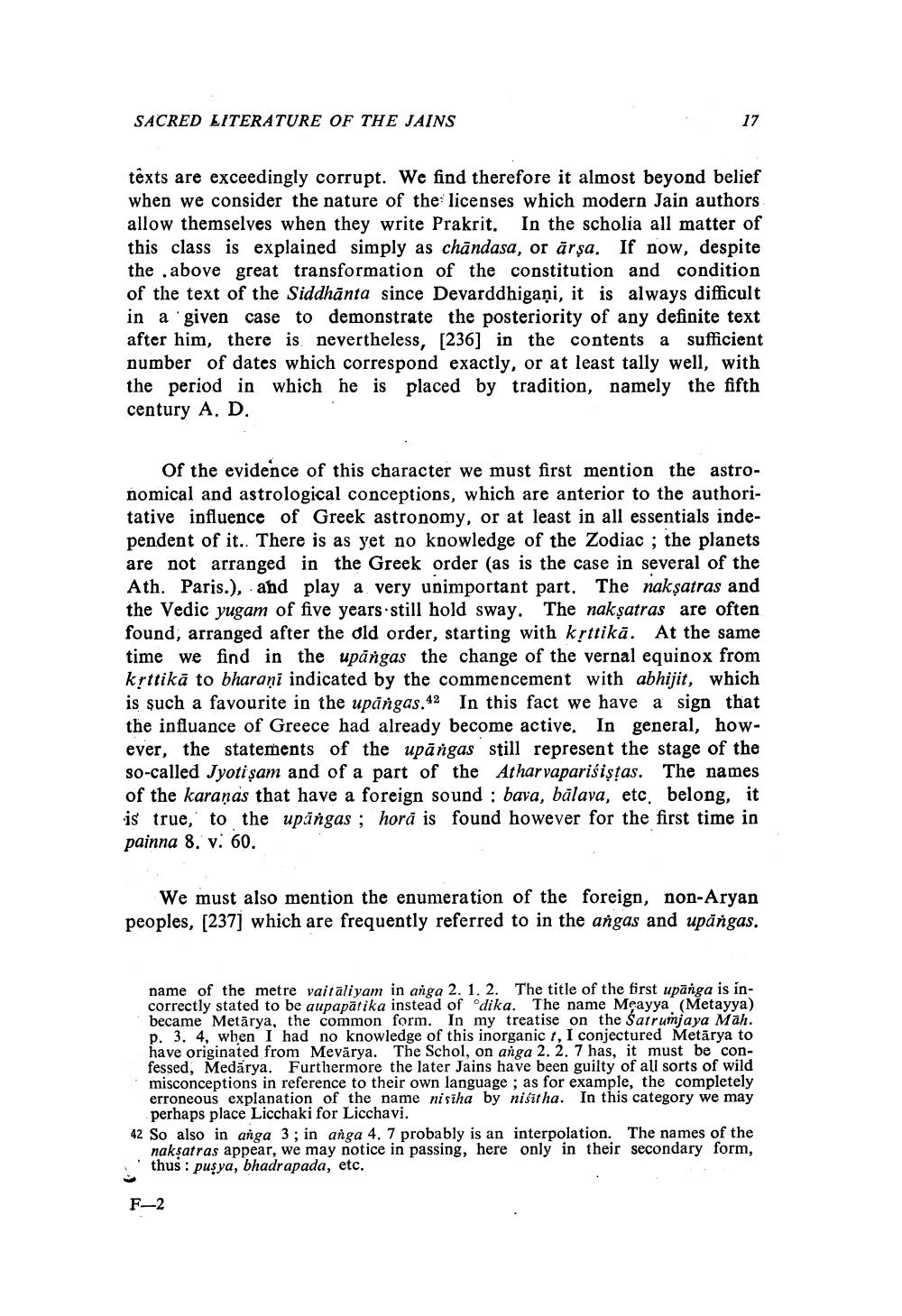________________
SACRED LITERATURE OF THE JAINS
texts are exceedingly corrupt. We find therefore it almost beyond belief when we consider the nature of the licenses which modern Jain authors allow themselves when they write Prakrit. In the scholia all matter of this class is explained simply as chāndasa, or ārşa. If now, despite the above great transformation of the constitution and condition of the text of the Siddhānta since Devarddhigaņi, it is always difficult in a given case to demonstrate the posteriority of any definite text after him, there is nevertheless, [236] in the contents a sufficient number of dates which correspond exactly, or at least tally well, with the period in which he is placed by tradition, namely the fifth century A. D.
Of the evidence of this character we must first mention the astronomical and astrological conceptions, which are anterior to the authoritative influence of Greek astronomy, or at least in all essentials independent of it. There is as yet no knowledge of the Zodiac ; the planets are not arranged in the Greek order (as is the case in several of the Ath. Paris.), and play a very unimportant part. The nak satras and the Vedic yugam of five years still hold sway. The nakşatras are often found, arranged after the old order, starting with krttikā. At the same time we find in the upāngas the change of the vernal equinox from krttikā to bharaṇi indicated by the commencement with abhijit, which is such a favourite in the upangas.42 In this fact we have a sign that the influance of Greece had already become active. In general, however, the statements of the upāngas still represent the stage of the so-called Jyoti şam and of a part of the Atharvaparišişțas. The names of the karaņas that have a foreign sound : bava, bālava, etc. belong, it is true, to the upāngas ; horā is found however for the first time in painna 8. v. 60.
We must also mention the enumeration of the foreign, non-Aryan peoples, [237] which are frequently referred to in the angas and upāngas.
name of the metre vaitaliyam in anga 2. 1. 2. The title of the first upanga is incorrectly stated to be aupapātika instead of dika. The name Meayya (Metayya) became Metārya, the common form. In my treatise on the Satrunjaya Mah. p. 3. 4, when I had no knowledge of this inorganic t, I conjectured Metārya to have originated from Mevārya. The Schol, on anga 2. 2. 7 has, it must be confessed, Medarya. Furthermore the later Jains have been guilty of all sorts of wild misconceptions in reference to their own language, as for example, the completely erroneous explanation of the name nisiha by nišitha. In this category we may
perhaps place Licchaki for Licchavi. 42 So also in anga 3 ; in anga 4, 7 probably is an interpolation. The names of the
nakşatras appear, we may notice in passing, here only in their secondary form, thus : pusya, bhadrapada, etc.
F-2




